
At the easternmost inhabited tip of Crete, 35 km from Sitia and 7 km from the coast, seeing the wild bushes and the gray landscape of the mountains, especially during the summer, one thinks this land is barren. Soon, however, an oasis emerges in front of them. Zakros is located within dense olive groves, surrounded by mountains. Relatively cut off from the surrounding areas, the village is a small embrace of nature.
A part of the Sitia Geopark and a protected area of the European Ecological Network Natura 2000, the area of Zakros, the coastal zone, the mountains west, east and south, host a kingdom of rare flora and fauna with sites of paleontological interest, important archaeological sites of the Minoan period and other historical settlements.
There are many views on how the name Zakros, which is pre-Hellenic (Minoan), came to be.
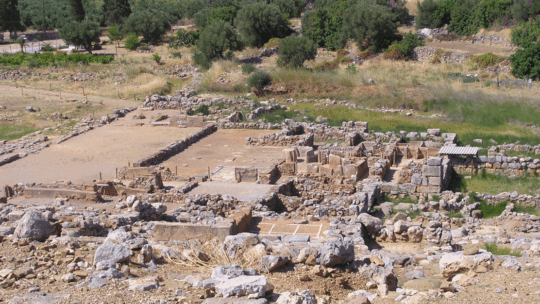
Archaeological research has revealed continuous human presence here, ever since the Neolithic era. The small coastal settlement of Kato Zakros, at about 7 km from the village, is located at the bay of Zakros. The two settlements are connected through the Gorge of the Dead. The Minoan Palace of Zakros, the fourth largest palace in Crete, first built in 1.900 BC and excavated almost 4.000 years later, in 1.961, by Nikolaos Platonas, is located in Kato Zakros. The Palace, together with its annexes, takes over a total area of over 8.000 sq.m. and it is estimated that there were about 300 apartments of various uses in this area, all floors included. More about the Palace of Zakros
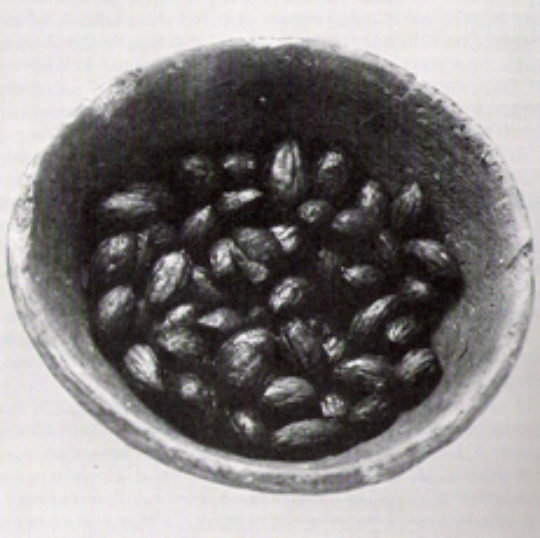
Fun Fact: Among the archaeological findings, there was a cup full of olives with their sarcoma preserved (!) due to the soil moisture, within a well that was constructed in the central courtyard of the palace of Zakros. Based on the findings, the area is considered to have been an administrative and worship center, but also a strategic point for the legendary Minoan Fleet in Crete.
The palace of Zakros, located east with respect to the other three great Minoan palaces, probably coordinated trade relations and diplomatic contacts with Cyprus, Syria, Phenicia, Palestine and Egypt. The palace was found intact, with very important findings. Utensils and works of art from valuable materials such as copper, ivory and alabaster, give us information about the products that were imported to the island. Learn about the Minoans
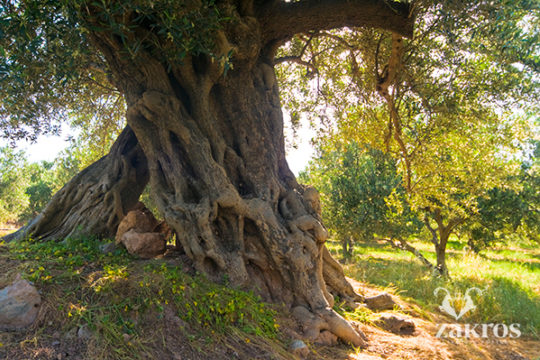
In Zakros, the climatic and soil conditions have been ideal for olive growing since ancient times. It is located at an ideal altitude of 200-250 meters from the sea and has a warm, dry microclimate with mild winters and warm summers. It possesses excellent water for irrigation and urban supply, from a series of natural springs, impacting the vegetation, the fruitfulness and the good quality of the olive fruit. The area has always been known for its rich water resources and watermills.
The limestone rich soils still nourish the centuries-old and super-centuries-old trees still cultivated today. The know – how on olive oil production that started with the Minoans is continuously being enriched by the next generations through the, almost monoculture nowadays, of the Koroneiki olive variety. How we cultivate in Zakros
When evolution becomes an initiative and a way of life.
In a relatively isolated geographical area, people here realized, early on, that the way to make their lives better was through solidarity and cooperation. Indicative of this unity is the fact that the first school building was created thanks to the donation of a plot of land and the voluntary work of the residents. The road to Sitia and the water and lighting networks were constructed in the same way.
The following is written in the notebook of Konstantinos Miliotis (1895-1986), then President of the Community of Zakros, regarding the completion of the works on the water supply and lighting networks, as well as the new carriage roads constructed:
“And thus, through understanding and cooperation, with effort and sweat, in a period of no more than three years, we managed to get the village lighting, water and transportation. God, who gave us the water, helped us to complete the other two.” K. Miliotis
This place went through a lot of difficult times and bore its own death toll during World War II. The women operated as guardian - angels in that difficult time, as, in a collective effort, they offered invaluable services to the local community through the “Charitable Association of Ladies and Misses: Melissa”. They helped patients and families in need, collected food, medicine, clothing and money for public works, and offered assistance to the Greek Army.
The Agricultural Cooperative of Zakros was in fact the second step of successful cooperation of the inhabitants. The motivation for this collective business effort came from the operation of the Dairy Cooperative of Zakros, with the cooperative production of excellent dairy products from the livestock farming of goats and sheep. Experience has shown the importance of knowledge and the continuous improvement of product quality. The result of this zeal was the Provisional Cheese – Making School of Zakros.
Zakros has been a self-sufficient area where handicrafts flourished to meet the household needs. An example thereof is the textile industry, with the processing of wool, flax, of the very little cotton of the area, as well as of silk. The women maintained and passed the art of weaving on from one generation to another, working together in harmony. The inhabitants used water power to grind grains to make bread, process textiles and produce their olive oil, in the “factories”. At the beginning of the 20th century, there were 11 watermills in Zakros that also served the surrounding areas.
Source of historical data: Book “Zakros, at the farthest end of Europe”, Giannis G. Rodanakis, 2013, ION Publishing Group.
Nowadays, apart from the Agricultural Cooperative of Zakros, the Women's Agricultural – Handicraft Cooperative “Melion” also operates in Zakros, thanks to the cooperative spirit of the women in the village. The Educational Association of Zakros, operating since 1981, promotes the preservation of the village culture, tradition, customs and history, through substantial activities.
The young remain united and active. Many of them choose to stay in the village. It is a way of life they have inherited and opted for. The historical memory and experience coming from the people’s ability to consider the common welfare have led to the success of the Cooperative effort and the establishment of a solidary “Politeia” (State).
Solidarity offers them the joy of belonging and of succeeding, together, upon anything that seems to be impossible for one person alone.
A part of the Sitia Global Geopark and the Natura 2000 network, the village of Zakros, the surrounding mountains, as well as the coastal Kato Zakros, possess unique natural trails with rare flora and fauna, archaeological sites, gorges, caves, springs and beaches.
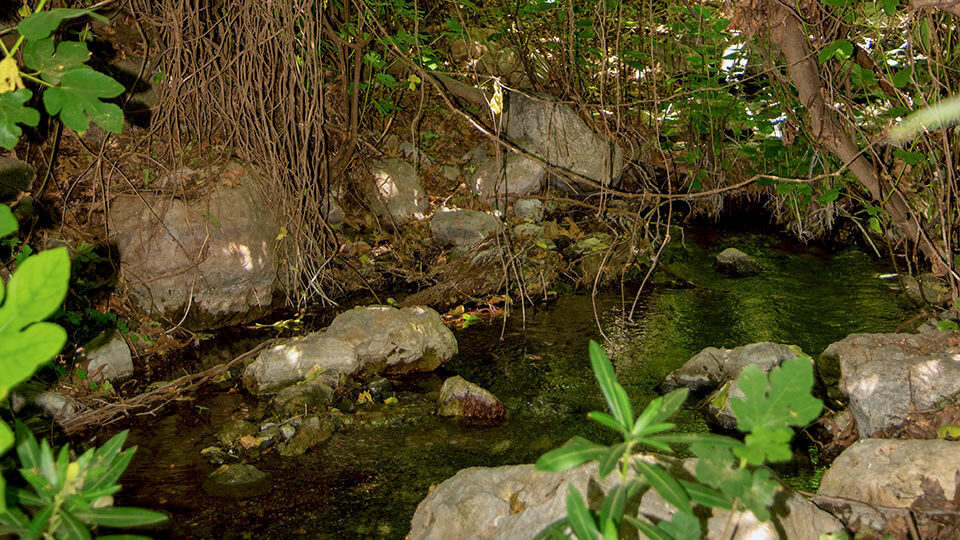
Zakros has plenty of water from the natural underground springs of the surrounding mountains. It is the rainwater stored in the aquifer, of excellent quality, suitable for both irrigation and water supply.
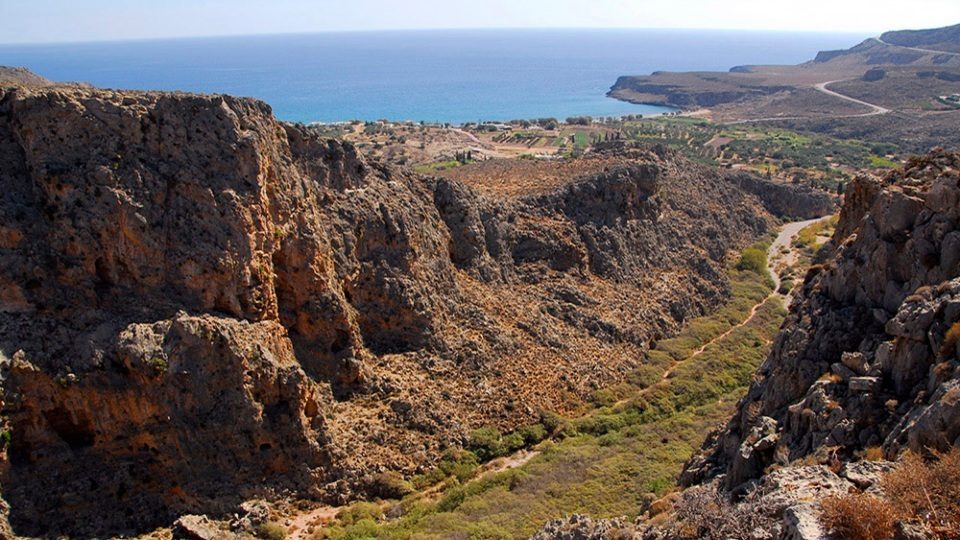
The Sitia Global Geopark covers an area of 517 sq.km., including the area of Zakros. Its unique microclimate and geographical location have formed a variety of ecosystems and hundreds of “geolocations”, in one of the most significant areas of the world from an environmental point of view.
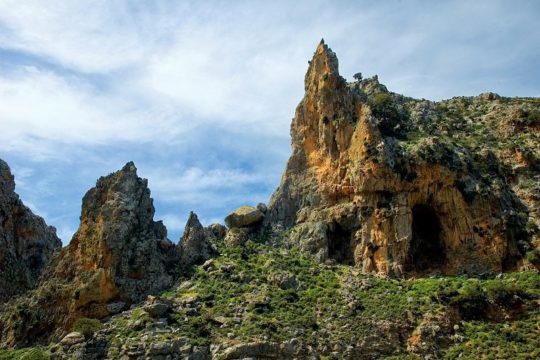
The E4 long distance hiking trail, that crosses Europe from the Pyrenees to Greece and Cyprus, as regards Crete, ends in Zakros! It is full of living and abandoned settlements, churches, vineyards, archaeological sites, windmills, Venetian towers, caves, beaches and gorges.
The Gorge of the Dead, the natural passage between Pano and Kato Zakros, is also part of the European E4 trail. The Gorge of the Dead is suitable for hiking and climbing on its imposing limestone rocks. It is full of rare species of plants, fossils and caves in the rock walls, which the Minoans, thousands of years ago, would use as tombs for their dead. Explore the Gorge of the Dead
Visit the Minoan palace that was found intact in Kato Zakros and see what one of the largest centers of the legendary Minoan fleet in Crete looked like. More about the Minoan palace of Kato Zakros
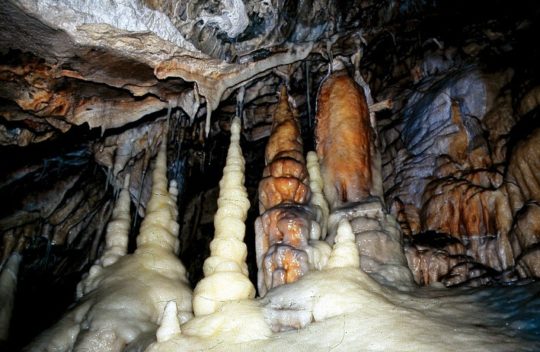
There are over 170 caves in the Sitia Geopark area. The cave of Sykia in the area of Pelekita, with its impressive stalactites and stalagmites, was used as a residence in the Neolithic era. You will find it five kilometers northeast of Kato Zakros.
The water path has been formed by the flow of the water itself, for thousands of years. It starts from the largest spring of Zakros, Mesa Mylos, meets the Gorge of the Dead and flows into the sea of Kato Zakros. There are also springs at Viglou, Anevalousa and Palaimylos. It is impressive that the settlement itself has been built following the path of the water, and, from above, it seems to be of a long and narrow shape, which looks like a stream descending from the foot of the mountain. The water path was followed by life, with small gardens, vineyards, irrigable olive groves and watermills built along it.
Pano and Kato Zakros, Adravasti, Azokeramos, Kellaria, Klisidi, Agios Georgios, Sfaka, Ziros, these are some of the settlements near and around Zakros. Each of them, a different world with its own unique history and features.
The visitors of Zakros share it as a common secret. A sanctuary for the few, it is worth visiting if what you seek is essence. The simple lifestyle in the village streets and at its square, the walks in the olive groves and by the springs, the exploration at the ancient findings, the cycling races on the natural trails, the dives at the nearby coast of Kato Zakros, and the moments of rest within the aura of nature, without any superfluous stuff, are the treasures you are to discover.
Zakros has loyal friends from all over the world who prefer it for their holidays and for the olive oil of the Agricultural Cooperative of Zakros. They often share their experiences from the area and communicate with each other all year round. Here they are reinvigorated, sharing experiences with the locals and filling their souls with beautiful images. Plan your visit to Zakros.
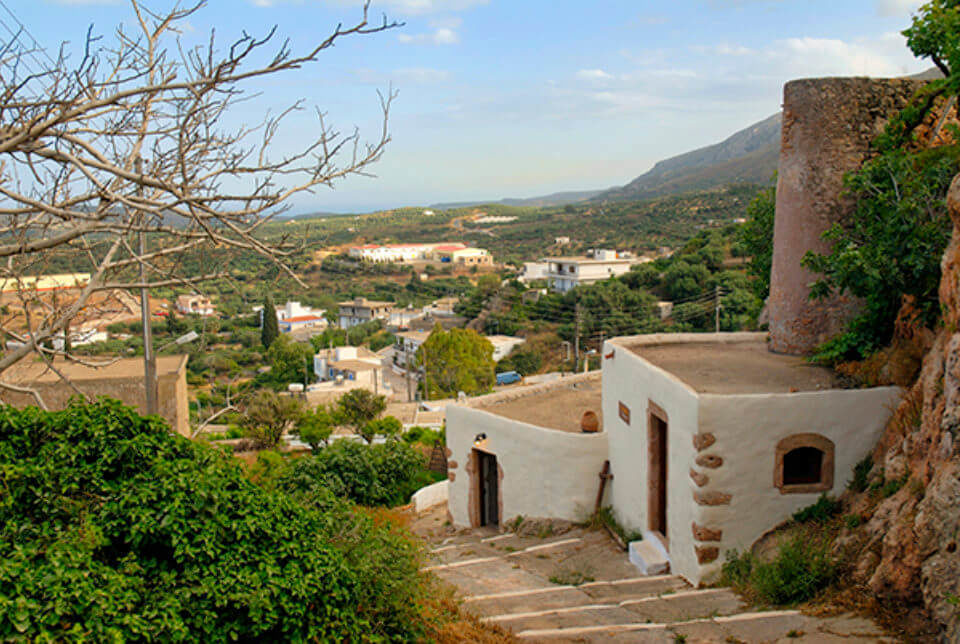
See how people live in a traditional Cretan village, a part of a historical world that stays alive and kicking.